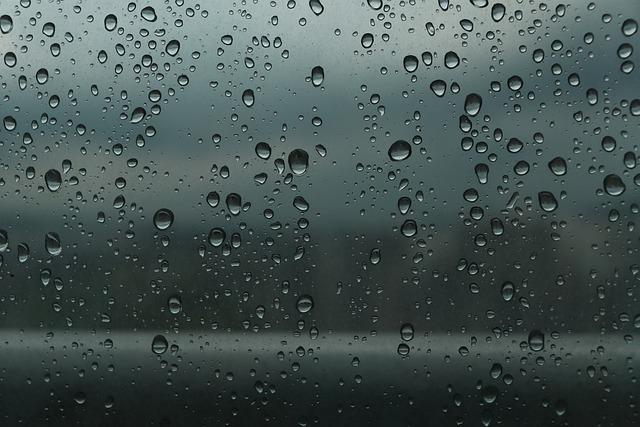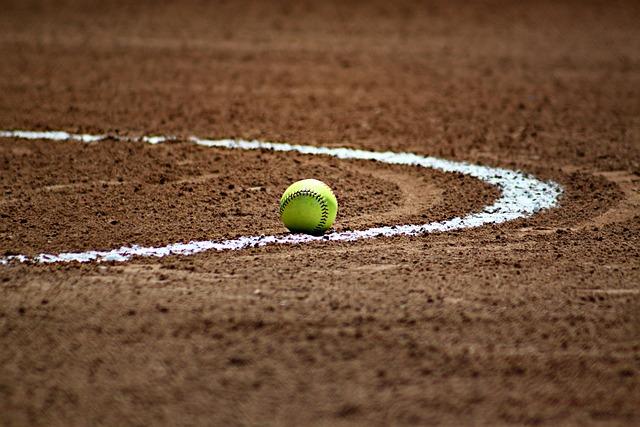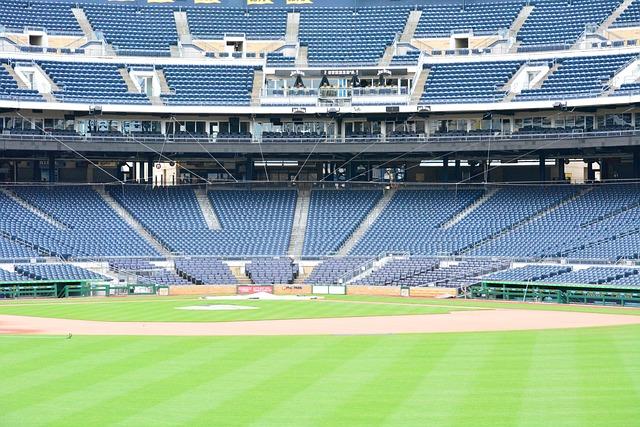- How Climate Change is Impacting the Future of Baseball: A Game in Transition
- Changing Weather Patterns and Game Schedules
- Field Conditions and Player Performance
- Rising Temperatures, Injuries, and Fan Comfort
- Stadium Operations and Sustainability Efforts
- Conclusion
- FAQs
- References
How Climate Change is Impacting the Future of Baseball: A Game in Transition
Climate change is having a profound impact on many industries and activities, and unfortunately, baseball is no exception. From unpredictable weather to sweltering temperatures, the future of this beloved game—long known as "America's pastime"—is being reshaped by environmental shifts. In this article, we will dive deep into how these transformations are altering not only game schedules, but player performance, field conditions, stadium sustainability practices, and fan experiences.
We will explore how changing weather patterns have direct consequences for game-day scheduling, why rising temperatures affect both athletes and fans, and how teams and stadiums are embracing sustainability efforts to adapt to evolving climatic realities. By the end of this discussion, you will see that baseball is a game deeply intertwined with the environment—and it faces real challenges unless preemptive actions are taken.
Changing Weather Patterns and Game Schedules

(Image: Pixabay/@Joshua_seajw92)
The effects of global climate change on weather patterns are noticeable, especially during the baseball season, which typically runs from spring through fall. These seasonal windows traditionally offer mild or predictable weather, but with climate change making conditions more erratic, teams are finding themselves with an increasing number of rain-outs, snow delays, and unexpected extreme weather events.
Unpredictable Rain-Outs: The past few decades have witnessed a rise in cancellations due to rain. Historic data indicates a 15-20% increase in the frequency of rain delays compared to previous seasons. With games already scheduled tightly within the confines of a six-month schedule, rescheduling postponed games becomes more cumbersome each passing year.
Delays Due To Extreme Weather: Beyond simple rainouts, snowstorms have made earlier appearances in some northern ballparks, often causing early-season chaos. Unexpected snow delays were once rare, but there have been recent April snow postponements in major cities like Chicago and Minneapolis.
Impact On Training And Travel: The spillage-over effects also extend to team travel schedules and training routines. Teams often must readjust travel plans and game preparation due to last-minute delays or unpredictable weather, which can result in lower morale and disruptions in player focus.
MLB Schedule Adjustments: Major League Baseball (MLB) has started looking at contingency plans for more scheduled doubleheaders or even shortening the entire season to allow for greater maneuverability around climate issues.
Field Conditions and Player Performance

(Image: Pixabay/@Clker-Free-Vector-Images)
The condition of a baseball field is intricately linked to weather, as well. Rain and heat both have significant impacts on field quality and safety, which directly affects how players perform during the game.
Muddy Fields and Injury Risks: Waterlogged and muddy fields pose a high risk to player safety. Wet outfields make it harder for players to run, turn, and stop suddenly without risking injury. Sliding into bases becomes an increased hazard on slippery clay, leading to far more players suffering from muscle strains and joint injuries.
Heat and Turf Hardness: On the flip side, excessively hot climates can lead to dried-out grass, resulting in harder field surfaces. Not only can this increase ball bounce unpredictability, but it also leads to higher risks of knee and ankle injuries due to harder impacts. Additionally, synthetic turf in certain stadiums heats up rapidly under high temperatures, creating potential heat stress on players.
Athletic Performance Deterioration: Poor field conditions due to climate can also impact performance quality. With game-days leaning toward either too rainy or too hot, players may struggle with their grip, bat swing speed, and overall coordination—affecting one of the game's core metrics: player consistency.
Field Management Costs: Extreme weather also raises maintenance costs for managing the quality of the field. Teams are now investing more in enhanced drainage systems, better irrigation technologies, and natural vs. synthetic grass decisions to mitigate issues caused by climate unpredictability.
Rising Temperatures, Injuries, and Fan Comfort

(Image: Pixabay/@cherylholt)
As global temperatures rise, the world of baseball is feeling the heat, quite literally. The increasing number of games played under scorching conditions is taking its toll on player performance, injury rates, and spectator comfort.
Heat and Player Fatigue: Players, whether they’re on the field or in the dugout, are battling more heat fatigue than ever before. High temperatures lead to rapid dehydration, loss of focus, and reduced stamina, all of which degrade player performance during crucial moments late in the game.
Increased Injury Risk: Muscle strains, cramps, and even cases of heatstroke are becoming more prominent during summer games. Medical data shows that players who have to perform under extremely high temperatures suffer more frequent injuries, potentially shortening careers and weakening team lineups for the remainder of their respective seasons.
Fan Experience and Attendance: From sweltering seats to dangerously high UV exposure, fan comfort also comes into play. When temperatures soar above 90 degrees Fahrenheit, fans tend to leave games early or avoid coming altogether. Yearly attendance figures have begun to show a slight drop during peak summer months, likely due to these unbearable conditions.
Cooling Measures Taken by Stadiums: Modern stadiums have begun incorporating misting stations, shaded areas, and open-door policies for reused water bottles to help mitigate fan discomfort. There’s also an ongoing push among some arenas for domed structures to shield everyone from both heat and rain.
Stadium Operations and Sustainability Efforts

(Image: Pixabay/@kristinelonsford)
As stadium operations require massive resources—water, energy, transportation, waste management—they are facing increasing pressure to adapt to environmentally sustainable practices.
The Rise in Eco-Friendly Initiatives: Many ballparks are reducing their environmental footprint by embracing initiatives such as installing solar panels, incorporating LED lighting, and adopting zero-waste policies. Some stadiums recycle their water and have transitioned to using recyclable food containers to reduce their carbon footprint.
Sustainable Energy Solutions: Solar-powered scoreboards, electric vehicle charging stations, and energy-efficient lighting systems have become common in various arenas. Teams also collaborate with sponsors focusing on eco-conscious products, fostering brand alliances built around sustainability.
Transportation and Green Choices for Fans: With emissions from fan transportation contributing significantly to a game's carbon footprint, some stadiums are providing incentives like free transit passes or premium parking spaces for carpoolers and electric vehicle users.
Long-term Vision: Net Zero Ballparks: An increasing number of teams are discussing long-term visions of building "net-zero" stadiums—spaces that offset as much carbon dioxide as they produce. These discussions point to an emerging blueprint for a sustainable integration of baseball with the pressing challenge of climate mitigation.
Conclusion
The relationship between climate change and the future of baseball cannot be understated. While teams and stadium operators work hard to combat the shifting climate, the adaptations required go beyond just game schedules and player preparation. Fields must be maintained differently, stadiums need to evolve in terms of energy usage, and the very experience of watching America’s pastime could be altered forever if solutions aren't found.
This discussion brings to light the emerging challenges faced by the sport due to rising global temperatures, unpredictable weather, and other environmental changes. It is evident that proactive, thoughtful solutions need to be implemented for baseball to remain a cherished part of our culture—even in a different climate context.
FAQs
How does climate change influence baseball game cancellations?
Climate change increases the unpredictability of weather patterns, leading to more frequent rain-outs, snow dilemmas, and extreme heat conditions that force games to be delayed or completely canceled. Teams often have to reschedule games, complicating the already packed game season.
What measures are stadiums taking to fight the effects of heat for fans?
Some modern stadiums have introduced misting areas, air-conditioned zones, water buffets, and opening roofs that can offer shelter from both heat and cold. Additionally, a few stadiums have started offering shaded seating to help fans escape from direct sunlight.
What injuries are players more prone to due to changes in climate?
Due to higher temperatures and harsher field conditions—from both rain-soaked and sun-baked grounds—players face increased risks of muscle strain, heat exhaustion, ankle injuries, and dehydration-related problems. Heatstroke is also becoming a concern.
Are more MLB teams going green and incorporating sustainability efforts?
Yes, several MLB teams are committed to sustainability functions like using recycled water, LED-lit scoreboards, and carbon-neutral partnerships. They have increasingly embraced solar energy and encourage public transport to their games to reduce the carbon footprint of fans attending.

